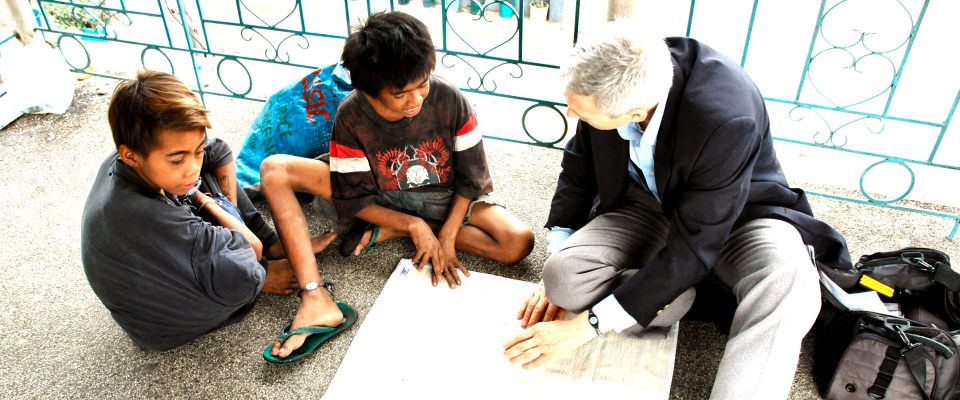By Lee Havis
In April 2000, while in McAllen, TX conducting an IMS workshop there, I decided to visit a nearby border town in Mexico. Walking around the streets, I noticed a number of poor children there, begging for money and to sell small items to American tourists. While I recognized the obvious immediate material need of the children, I was more drawn to the underlying problem of their poverty and neglect, to see how better to help that problem rather than hand them some money.
Thinking about this problem, I realized the solution was to set up some dignified, honorable means to give them money for something of value they would offer in exchange. The problem was: “What does a poor child have to offer in exchange for the money?” Without valuable skills or something useful to buy, I couldn’t see anything at first. But then, suddenly, it dawned on me that they had their valuable TIME to offer!
So, I thought about how to set up some practical interaction with these children based on exchange of value, “time” for “money”. Following this concept, I decided to offer each child a small sum of money in exchange for first paying attention to a brief academic lesson on reading, writing, or math at their likely level of interest and ability. This would have the effect of developing, trust, patience, attention, and integrity in the child since the money is only given AFTER the lesson is complete. As a practical matter, I created a set of “portable” low-tech Montessori materials for giving the instruction, using such items as pieces of stiff paper with printed letters and numbers, and various simple objects for sensorial and academic activity.
With this plan and materials in hand, I returned to the same Mexican border town, and implemented an experiment with this “character teaching” concept. Now, when some child approached, asking for money, I offered to give some money if they would sit down for a brief academic lesson. At first, the children were somewhat shy and fearful, however, once the lesson began, and they received the money, they became friendly, so other children approached asking for lessons, which actually drew more interest and appreciation than the little money they received at the end. From this experience, I could see how this program could train many teachers to conduct this same approach to good advantage in any country or location with similar conditions of poverty.
Based on this initial success, I enlarged the concept of “Character Teaching” to develop more substantial relationships with the children on a regular basis, such as offering “Character Teaching” T-shirts, journals, writing instruments and other learning materials according to the interest, progress and needs of each child. I also envisioned centers where parents and children could have a longer daily session of Montessori teaching in a group, supervised by a local trained Montessori teacher, who would eventually be sustained by the local community.
Since creating this project in 2000, I have devised a series of practical steps to establish the actual operation of the CT project, starting first with an initial consultation visit to train and orient a team of teachers to be later employed in the program. And, after 2003, this training would be built around the use of IMS technology, which would be used by all teachers in the CT project. In this way, the IMS would be learned and used by many others as the project’s success becomes more widely known and appreciated in all segments of the local education community and among parents of children in the country.
Although the project is yet too innovative and unconventional to gain full operation anywhere, I’m confident that once started, it will rapidly demonstrate the practical value of the “new education” and become widely used and well-recognized as a key to resolving widespread cultural poverty and character flaws at cause in this poverty in all places around the world.

